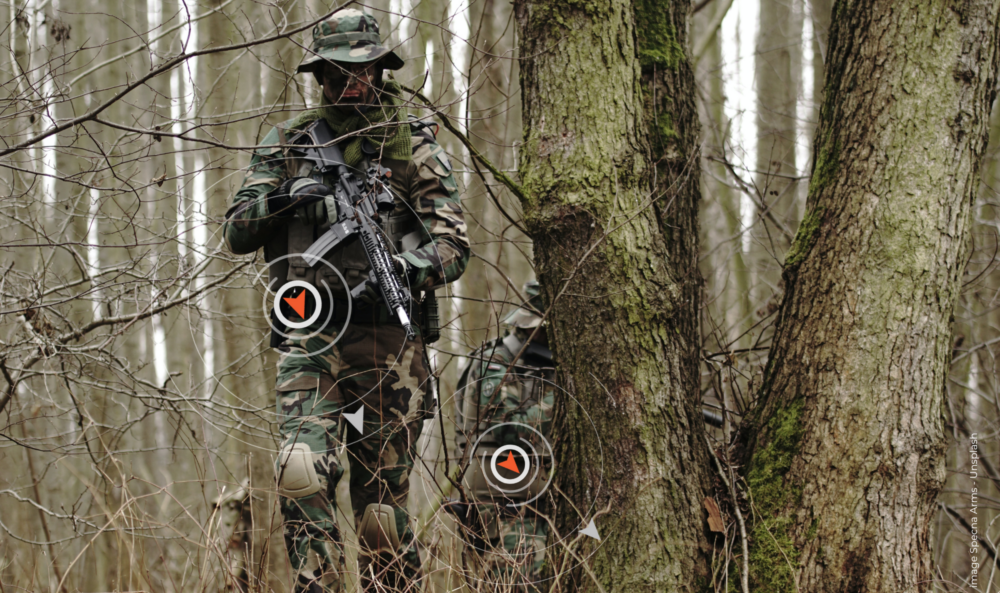
The Army must prepare for conflicts of the 2030-2040 era. The associated challenges represent multiple technological issues for defense technology providers. SYSNAV is particularly engaged in the challenge of dismounted soldiers localization.
In this medium-long term reflection, two major issues dominate, each of them covering multiple challenges with technological resonance. The first issue is ensuring operational superiority in increasingly info-centric conflicts. The second issue is about maintaining France‘s strategic independence in terms of defense technologies.
First issue, the preponderant role of information technologies in modern conflicts will continue to grow. Operational superiority will require mastering the battlefield digital management.
For the infantry, particularly in urban combat operations, the geolocation of personnel carriers like that of dismounted infantrymen will be critical to ensure the maneuver efficiency and ultimately the infantryman’s survivability. Subsequently infrantrymen need to be equipped with geolocation systems. These must work both inside buildings and outside in “urban canyons”, where GNSS signals can only be partially received. Moreover, they must resist to jamming and deception.
The effectiveness of tactical intelligence will require better information georeferencing particularly in target designation. The geolocation technologies equipping the infantryman will enable him to position an objective in absolute coordinates on the tactical digital map, even in a GPS-denied situation.
Advances in land robotics shall facilitate the infantrymen maneuver by providing robotic logistical support. Positioning and navigation technologies that are reliable, accurate and highly available will be essential, for example for the autonomous following of a lead vehicle by unmanned vehicles.
The cyber threat to all components of the combat information system will continue to increase. It is therefore essential that security-by-design prevails at all levels, from hardware design to software components and communication protocols. This is a constant concern for SYSNAV.
Strategic independence of France and Europe in terms of technologies for military or dual use is the other major challenge that underpins any forward-looking reflection.
While we have seen how much geolocation technologies are becoming essential in intelligence as well as in maneuvers, it is important to remedy the inherent shortcomings of GNSS systems by equipping all infantrymen with resilient geolocation tools. This requires the adoption of miniaturized solutions at a much lower cost than the inertial measurement units that equip some vectors today. SYSNAV’s magneto-inertial technology is, in this respect, the best guarantee of national mastery of such a capability.
This mastery includes in particular algorithmic innovation for embedded inertial navigation software. Their sophistication enables us to use sensors originating from progress in civil electronics, therefore mass-produced and subject to a lower risk of supply chain disruption.
While the mastery of defense systems will increasingly imply the mastery of algorithms and AI, embedded or not, the excellence of French teams will be of increasing importance for French and European self-sufficiency in this field. SYSNAV is already contributing to this and continues to reinforce its talents in that perspective.
From the examples discussed here, it appears that the partnership between the Armed Forces and national manufacturers, in particular SMEs, is more than ever essential to ensure both faster and financially controlled maturation of the innovations that tomorrow’s defense needs.
More info about SYSNAV’s value proposition to the defense market.
